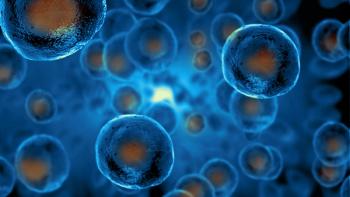
Pharmaceutical Technology Europe
- Pharmaceutical Technology Europe-10-01-2010
- Volume 22
- Issue 10
The Pros And Cons Of Single-Use Systems
The willingness of the industry to use single-use bioreactors is currently influenced by the criticality of the step, the value of the product and the time for product development and production.
Editor's Note: This article is part of a special feature on single-use systems that was published in the October issue of PTE Digital.
The willingness of the industry to use singleuse bioreactors is currently influenced by the criticality of the step, the value of the product and the time for product development and production.
Advantages
Single-use bioreactors are considered safe, simple and clean, and the possibility of batchtobatch contamination by adventitious microorganisms or through product crosscontamination is significantly controlled. One of the biggest advantages of such systems, however, is flexibility. The increasing trend towards multidrug facilities demands the production of different drugs using the same facility, with minimum time and cost. In such situations, the main manufacturing bottleneck is line clearance and cleaning validation. Singleuse bioreactors almost completely eliminate these problems.
Additionally, single-use bioreactors provide maximum savings on the time spent to prepare the system for the next batch. As an example, a 2-h changeover time with a single-use bioreactor would equate to a changeover time of 6–10 h with a stainless steel bioreactor for the same product, and 3 weeks for a full product changeover.
Obstacles to adoption
There are also some key challenges associated with single-use bioreactors. In particular, such systems are noncustomisable (since customisation would defeat their key advantage of plug and play) and can provide challenges when it comes to scale up since the volume size is restricted (<2000 L). Disposal can also be a problem. In many cases, singleuse bioreactors are produced from plastic derivatives. In addition to validation concerns related to potential leachable and extractable materials, the largescale disposal of such plastic reactors on a regular basis is also an environmental concern. This is a key challenge, particularly in countries where the disposal of plastics is strictly controlled.
Future innovations
In the future, the most important future development in singleuse bioreactor technology will be the increase in capacity to match common largescale process capacities. Singleuse bioreactor customisation will also mark a significant innovation, whereby the bioreactor system will fit into the existing space without compromising process requirements.
Salavadi S. Easwaran is Technology Manager-PMT, at Merck Millipore, India.
Articles in this issue
over 15 years ago
Validating Single-Use Systemsover 15 years ago
Green is the wordover 15 years ago
Newsover 15 years ago
Europe: A Future Leader in Vaccines?over 15 years ago
Developing A Quality Agreement Template For Single-Use Systemsover 15 years ago
Online Monitoring Of Continuous Hot Melt Extrusionover 15 years ago
An All-Round Excipient For Direct Compressionover 15 years ago
Quantitative open-access HPLC analysis: a new calibration approachNewsletter
Get the essential updates shaping the future of pharma manufacturing and compliance—subscribe today to Pharmaceutical Technology and never miss a breakthrough.




